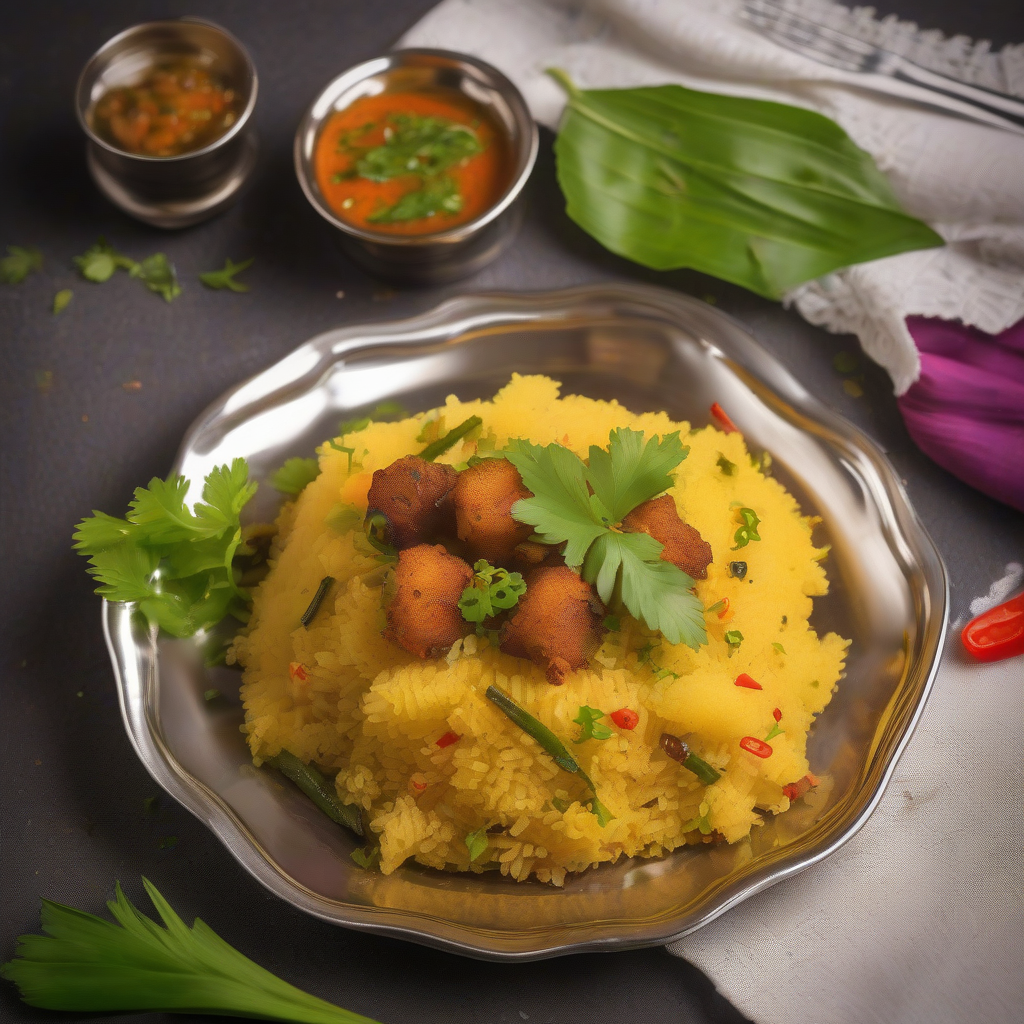Upma Fry: Your New Favourite Tiffin Treat, Boss!
Namaste Doston! Kem Cho? Assalamualaikum! Sat Sri Akal! Chef Curry Do’pyaza here, back with another delicious dish to tantalize your taste buds. Today, we’re diving into a classic South Indian breakfast staple, but with a delightful twist – Upma Fry!
Upma, my friends, is a dish that’s close to the heart of many Indians, especially in the South. It’s a comfort food, a quick breakfast, and a light dinner all rolled into one. You’ll often find it gracing tables during festivals like Diwali and Pongal, or even as a simple, satisfying meal on a rainy monsoon evening. It’s a dish that transcends occasions, becoming a part of daily life.
A Little Trip Down Memory Lane
The history of Upma is a bit hazy, like the steam rising from a freshly made bowl. But it’s believed to have originated in South India, possibly in Karnataka or Tamil Nadu. Over time, it spread its deliciousness across the country, with each region adding its own special touch. The beauty of Upma lies in its simplicity and adaptability. You can add vegetables, spices, and even different types of grains to create your own unique version.
Let’s Get Cooking!
This Upma Fry recipe takes the humble Upma and gives it a crispy, golden makeover. Trust me, this is going to be your new favourite tiffin treat!
Preparation Time: 10 minutes
Cooking Time: 20 minutes
Ingredients:
- 1 cup Sooji (Semolina/Rava)
- 2 tablespoons Tel (Cooking Oil)
- 1 teaspoon Rai (Mustard Seeds)
- 1 teaspoon Jeera (Cumin Seeds)
- 1 sprig Kari Patta (Curry Leaves)
- 1 medium Pyaaz (Onion), finely chopped
- 1 inch Adrak (Ginger), grated
- 1-2 Hari Mirch (Green Chillies), finely chopped (adjust to your spice level)
- 1/2 cup mixed vegetables, finely chopped (Carrot, Peas, Beans – your choice!)
- 2 cups Paani (Water)
- 1/2 teaspoon Haldi Powder (Turmeric Powder)
- Namak (Salt) to taste
- 1 tablespoon Hara Dhaniya (Fresh Coriander Leaves), chopped
- 1 tablespoon Nimbu ka Ras (Lemon Juice)
Instructions:
- Roast the Sooji: Heat a heavy-bottomed pan on medium heat. Add the sooji and dry roast it until it turns light golden and aromatic. This usually takes about 5-7 minutes. Be careful not to burn it! Remove the roasted sooji from the pan and set aside. This is a crucial step for a fluffy, non-sticky Upma.
-
Temper the Spices: In the same pan, heat the oil. Once hot, add the mustard seeds. When they start to splutter, add the cumin seeds and curry leaves. Let them sizzle for a few seconds, releasing their fragrant aroma.
-
Sauté the Aromatics: Add the chopped onion and sauté until it turns light golden brown. Then, add the grated ginger and chopped green chillies. Sauté for another minute until the raw smell disappears.
-
Add the Veggies: Throw in your chopped vegetables and sauté for 2-3 minutes until they are slightly softened.
-
Bring it Together: Add the turmeric powder and salt to the pan. Pour in the water and bring it to a rolling boil.
-
The Upma Magic: Reduce the heat to low. Gradually add the roasted sooji to the boiling water, stirring continuously to prevent lumps from forming. This is where your arm workout begins!
-
Cover and Cook: Cover the pan and let the Upma cook for 5-7 minutes, or until all the water is absorbed and the sooji is cooked through.
-
The Fry Touch: Now for the magic! Spread the cooked Upma evenly in the pan. Increase the heat to medium and let the bottom of the Upma crisp up and turn golden brown. This will take about 5-7 minutes. Gently flip the Upma and crisp the other side as well.
-
Garnish and Serve: Sprinkle the chopped coriander leaves and lemon juice over the Upma Fry. Mix gently and serve hot!
Chef’s Tips for the Perfect Upma Fry:
- Roasting is Key: Don’t skip the roasting step! It ensures a fluffy and non-sticky Upma.
- Water Ratio: The water-to-sooji ratio is crucial. Too much water will result in a mushy Upma, while too little will make it dry.
- Stir, Stir, Stir: Keep stirring while adding the sooji to the boiling water to prevent lumps.
- Low and Slow: Cook the Upma on low heat to ensure it cooks evenly and doesn’t burn.
- Be Patient: Let the Upma Fry properly on each side for that perfect crispy texture.
Upma Fry: Different Strokes for Different Folks
- Gas Stove: The classic method, perfect for achieving that golden-brown crisp.
- Induction Stove: Works just as well as a gas stove, offering precise temperature control.
- Pressure Cooker: Not recommended for this recipe, as the frying element is key.
- Oven: You could bake it after the initial Upma is made, but it won’t be the same as pan-frying.
- Microwave: Not ideal for achieving the desired crispy texture.
- Air Fryer: You can try air frying small portions of the Upma for a healthier, crispy version.
- Slow Cooker/Crockpot: Not suitable for this recipe.
Nutritional Information (Approximate per serving):
- Calories: 250-300
- Protein: 5-7g
- Carbohydrates: 40-45g
- Fat: 8-10g
(Note: These values are approximate and may vary depending on the specific ingredients and portion sizes used.)
Serving Suggestions:
- Serve hot with a dollop of coconut chutney or tomato ketchup.
- A side of sambar or rasam also complements Upma Fry beautifully.
- Enjoy it as a breakfast, brunch, or a light dinner.
Your Turn!
So there you have it, folks! A simple yet satisfying Upma Fry recipe that’s sure to become a family favourite. Now, go ahead and try this recipe at home. Surprise your loved ones with this delightful treat. They will love you for it!
Until next time, happy cooking!
Chef Curry Do’pyaza signing off!
